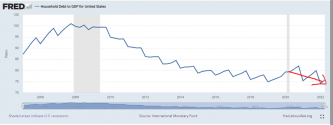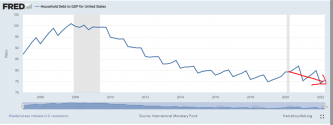You're spot on in your diagnosis of the problem- this is the problem with urbanization in general. Inevitably - the problem is least pronounced in Chongqing, that is precisely why Huang Qifan was selected to be part of the land factor reform policy committee.To what extent is this problem a replay of the Silicon Valley problem? It sounds quite similar. Ultimately what drives people out of these research/tech. mega centers is the housing price. If they can't afford to live in Shanghai, then they can't work there. Companies have the choice of either paying astronomical salaries for employees to work there, or opening research & development centers else where. The latter is becoming more sensible in the US - especially with work-from-home - due to the cost of living inflation in major tech. centers. I imagine the situation is even worse in China since the price-income ratio is higher in Chinese mega cities compared to Silicon Valley & New York City.
Inevitably, this has to change. Companies can't be profitable if they have to pay employees half a million dollars a year just so they can afford apartments in Shanghai. The Chinese government can facilitate the process by investing more in key infrastructure improvements in second tier cities, by which I don't mean roads or bridges, but quality of life benefits like health care, education, and environment improvements, that would attract highly skilled workers.
This *has to change* is a statement of *should* - I don't disagree - but I'm not in the business of talking about should/would - I'm in the business of anticipating what *will* happen.
Unfortunately what happened in the past decade is that every Chinese city thought they could be another Shanghai and built out all the basic infrastructure like roads/bridges for populations that never showed up - have a look at a city like Xiaoyi in Shanxi - that's another Hegang in waiting. Local governments are out of money to make these investments. In terms of healthcare - look at what Sanming in Fujian had to do as a result of NHSA bankruptcy - more reforms like these are going to be pushed out in 2023 and years beyond. Unfortunately these reforms are not pro-growth in the short term as it involves reducing the *cost* of healthcare (which means reducing corporate revenues/profits and employee compensation).
Have a watch of this video to understand the pressure of healthcare and what they're trying to do (in terms of balancing the need to foster innovation and cost reduction) - needless to say this all needs to be completed *before* the demographic bomb we've got in 2030s and beyond.
I'm not going to go further into the debate on solar - for one I'm not a SME and am not deep in the weeds on the numbers - but you've not really laid out how it can add meaningfully to GDP growth in 2023 vs. 2022.I have been to Zhengzhou, albeit not recently.
Yes, Zhengzhou is competing against other urban centres, but the fact remains that it is the capital of the province and will eventually end up as a megacity with all the institutions and amenities that make a city a nice place to live.
But in the meantime, Zhengzhou have to will compete on cheap labour and cheap land as a manufacturing hub. But once they have a critical mass of companies, universities etc, they should have a self-sustaining cluster that can move up the value chain.
Shanghai and Shenzhen are expensive and have limited land available. In comparison, Zhengzhou sits on a flat plain which allows it to sprawl as much as it wants, which should keep land costs in check.
Yep, I expect Q1 to be muted at best.
I'm assuming that you were in Japan during COVID and didn't experience the effects of a hard lockdown like in Europe or what Chinese cities just experienced. It's an exhausting experience and the exhaustion/malaise in the population lingers on for weeks afterwards.
That's why I am discounting all the trailing and current indicators on Chinese consumer demand.
Chinese New Year will be the first opportunity for much of the Chinese population to stop working 6 days a week, really rest and then come back recharged.
If we are talking institutions, Zhengzhou in 2021/2022 has shown precisely why it is not attractive - the floods in 2021 (someone in the muni government got sacked for that), then we had the COVID health code mis-use fiasco as well as the mortgage boycotts in the summer, and then we had this Foxconn brouhaha. Anyone who is considered upper middle class and have options are looking to GTFO.
Let me assure you that I've seen my share of lockdowns (March 2020 in NYC) over the past 3 years personally and have stayed in close touch with friends/family in the Shanghai lockdown. What you did not illustrate is the lack of desire to consume as a result of these lockdowns - these things take time to come back (for example the casual-fication of office wear - friends literally wear hoodies to the office working in Lujiazui now vs. suits before - that sir, is consumption downgrade). I've spoken to the management team of Tingyi (they make the Kangshifu noodles) and they are seeing consumption downgrade from people eating Luosifen/Takeout (20+ rmb) to their high end instant noodles (priced at 10RMB). This is the part of "reduced willingness to spend" phenomenon that is the feature of the new normal. These things might go away but they take time - not things that change in the span of a few quarters.
Tier 1 cities “not having land” is the biggest misconception - they have plenty of land - they just don't have sufficient quotas to convert rural farmland into urban commercial land in context of the "red line of 190mln Mu of farmland". That is being reformed as there are trials of a landmarket to facilitate inter-provincial land transfer. Have a read of Zhou Qiren's 城乡中国 as he illustrates exactly the genesis of this problem; and then listen to any of Huang Qifan's videos about what they need to reform and why Chongqing of all places does not have a 'there is no land problem'. You can also get into Lan Xiaohuan's 置身事内 if you want a simpler version of the genesis.
New city clusters will be created, and I would bet that it will be the Chongqing/Chengdu/Changsha/Hefei/Xi'an of the world ahead of a place like Zhengzhou (no offence if you're from there).
But none of this matters for 2023 growth - these are longer term implications.
I'll end the fact that the Party clearly acknowledge a lot of challenges/risks in its 3rd historic resolution released in Nov 2021. If anything things have deteriorated since then as a result of Omicron + Shanghai lockdown in terms of the consumer/business confidence. There are a lot of opportunities in China and a lot to like, but one should not be blind to the challenges.


